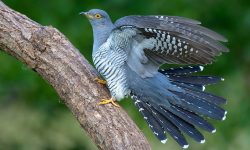Gulls are more than just seaside scavengers. With their keen eyesight, graceful flight, and often striking plumage, these birds have become favorites for birdwatchers along the coast and inland waterways. Alabama, with its diverse habitats ranging from the Gulf Coast to river systems and reservoirs, plays host to an impressive 16 gull species. While some are residents or regular migrants, others are rare vagrants that excite even seasoned ornithologists.
In this guide, we explore all 16 gull species recorded in Alabama, offering identification tips and highlighting what makes each one unique.

Common and Regularly Seen Gulls
1. Laughing Gull (Leucophaeus atricilla)
This is the most recognizable gull on Alabama’s Gulf Coast, especially during summer. Named for its high-pitched, laughing-like call, the Laughing Gull is medium-sized with a distinctive black head in breeding season, dark gray back, and white underparts. In winter, the black head fades to a dusky smudge.
Tip: Look for them in large, noisy flocks around beaches, docks, and fishing piers.
2. Ring-billed Gull (Larus delawarensis)
A familiar sight in parking lots and landfills during the colder months, the Ring-billed Gull is medium-sized with a clean white head, pale gray back, and its signature black ring around a yellow bill. Juveniles have more mottled brown plumage.
Tip: This is often the most abundant gull in inland Alabama during winter.
3. Herring Gull (Larus argentatus)
Larger and bulkier than most gulls, the Herring Gull has a hefty yellow bill with a red spot near the tip, pale gray wings, and pink legs. Adults show a clean white head in summer, while in winter they display brown streaking.
Tip: Found along both coastal and inland waterways; compare size to nearby gulls for easier ID.
4. Bonaparte’s Gull (Chroicocephalus philadelphia)
Small and elegant, Bonaparte’s Gull has a thin black bill, graceful flight, and striking black head during breeding season. In winter, it loses the dark hood, retaining just a small dark spot behind the eye. Its flight is buoyant and tern-like.
Tip: Look for this species during spring and fall migration near lakes and large rivers.
5. Franklin’s Gull (Leucophaeus pipixcan)
This inland gull is a treat to spot in Alabama. It sports a black hood, bright red bill, and pinkish wash on the underparts during breeding. Its eye-catching coloration and smaller size make it stand out among other gulls.
Tip: Seen mostly during migration, especially after strong storm systems.
6. Lesser Black-backed Gull (Larus fuscus)
Once rare, this gull is becoming more common in Alabama. Adults show a dark slate-gray back, yellow legs, and a strong yellow bill with a red spot. Their build is slightly sleeker than Herring Gulls.
Tip: Often mingles with other large gulls in winter, especially along reservoirs and coastal bays.
Rare or Accidental Sightings
7. Great Black-backed Gull (Larus marinus)
The largest gull in the world occasionally makes its way to Alabama. It towers over other species with its bulky body, thick bill, and jet-black upperparts. Its menacing presence dominates mixed-species flocks.
Tip: Look for it in coastal areas in winter, especially near harbors or jetties.
8. Iceland Gull (Larus glaucoides)
A pale beauty from the Arctic, this rare visitor has a delicate appearance with light gray wings and nearly white plumage. Lacks the black wingtips of other large gulls. Juveniles are creamy white.
Tip: Rarely seen, but often shows up in winter among large flocks of Herring Gulls.
9. Glaucous Gull (Larus hyperboreus)
Another Arctic breeder, the Glaucous Gull is massive and ghostly white with pale gray mantle and unmarked white wingtips. Its heavy pink bill tipped with black and pink legs are useful ID features.
Tip: Watch for this giant among mixed gull flocks near landfills or large lakes in winter.
10. Glaucous-winged Gull (Larus glaucescens)
Native to the Pacific Northwest, this gull is an exceptional rarity in Alabama. It resembles the Western Gull but has soft gray wingtips that blend into the back.
Tip: Any sighting should be documented, as it is extremely rare in the Southeast.
11. California Gull (Larus californicus)
Slightly smaller than Herring Gulls, with a dark eye and a red-and-black bill pattern. The legs are greenish-yellow. It breeds in the interior West but may appear in Alabama during migration.
Tip: Best identified with careful observation among mixed gull flocks.
12. Little Gull (Hydrocoloeus minutus)
The smallest gull in the world, the Little Gull is dainty and rare. Breeding adults have a black hood, but in winter they show a smudge behind the eye and dark underwings that contrast with the pale body.
Tip: Look for its fluttery flight near large lakes during migration.
13. Sabine’s Gull (Xema sabini)
This striking gull is known for its tri-colored wings and forked tail. It breeds in the Arctic and migrates over the open ocean. Rare in Alabama, usually seen during storms or offshore excursions.
Tip: Look offshore during hurricanes or strong coastal weather systems.
14. Black-legged Kittiwake (Rissa tridactyla)
A delicate-looking gull with a small black bill, gray back, and black legs. In flight, look for its distinctive black “M” pattern across the wings. It breeds on sea cliffs in the North Atlantic.
Tip: Usually found offshore; rare inland sightings can occur after storms.
15. Ivory Gull (Pagophila eburnea)
This ghostly, all-white Arctic gull is one of the rarest birds to appear in Alabama. It has black legs and bill and is typically found around polar ice.
Tip: Any record of this species is extraordinary and should be reported to birding authorities.
16. Gray Gull (Leucophaeus modestus)
Native to the Pacific coast of South America, this gull is a true vagrant. It is almost never seen in North America, let alone Alabama.
Tip: Any confirmed sighting would be of high ornithological interest.
Where to Watch Gulls in Alabama
Alabama’s best gull-watching spots include the Gulf Shores and Dauphin Island along the coast, Guntersville Lake, Wheeler National Wildlife Refuge, and even urban landfills and parking lots during winter. Flocks often contain a mix of species, offering great opportunities for side-by-side comparisons.
Conclusion
From the comical squawks of Laughing Gulls to the breathtaking rarity of Ivory Gulls, Alabama offers a surprisingly diverse selection of gulls for birdwatchers to enjoy. Whether you’re scanning the surf at Gulf Shores or studying flocks at an inland reservoir, each gull species tells a story of migration, adaptation, and ecological wonder.
Mastering gull identification takes time, but with patience, practice, and a good field guide, you’ll start noticing subtle features—leg color, wing shape, bill markings—that unlock the secrets of these fascinating birds. Keep your binoculars handy year-round, especially in winter, when mixed flocks can hold surprises.
If you’re ready to take your birding to the next level, start a gull journal, join a local birding group, or contribute your sightings to eBird. The more you watch, the more you’ll discover that Alabama’s gulls are anything but ordinary.






